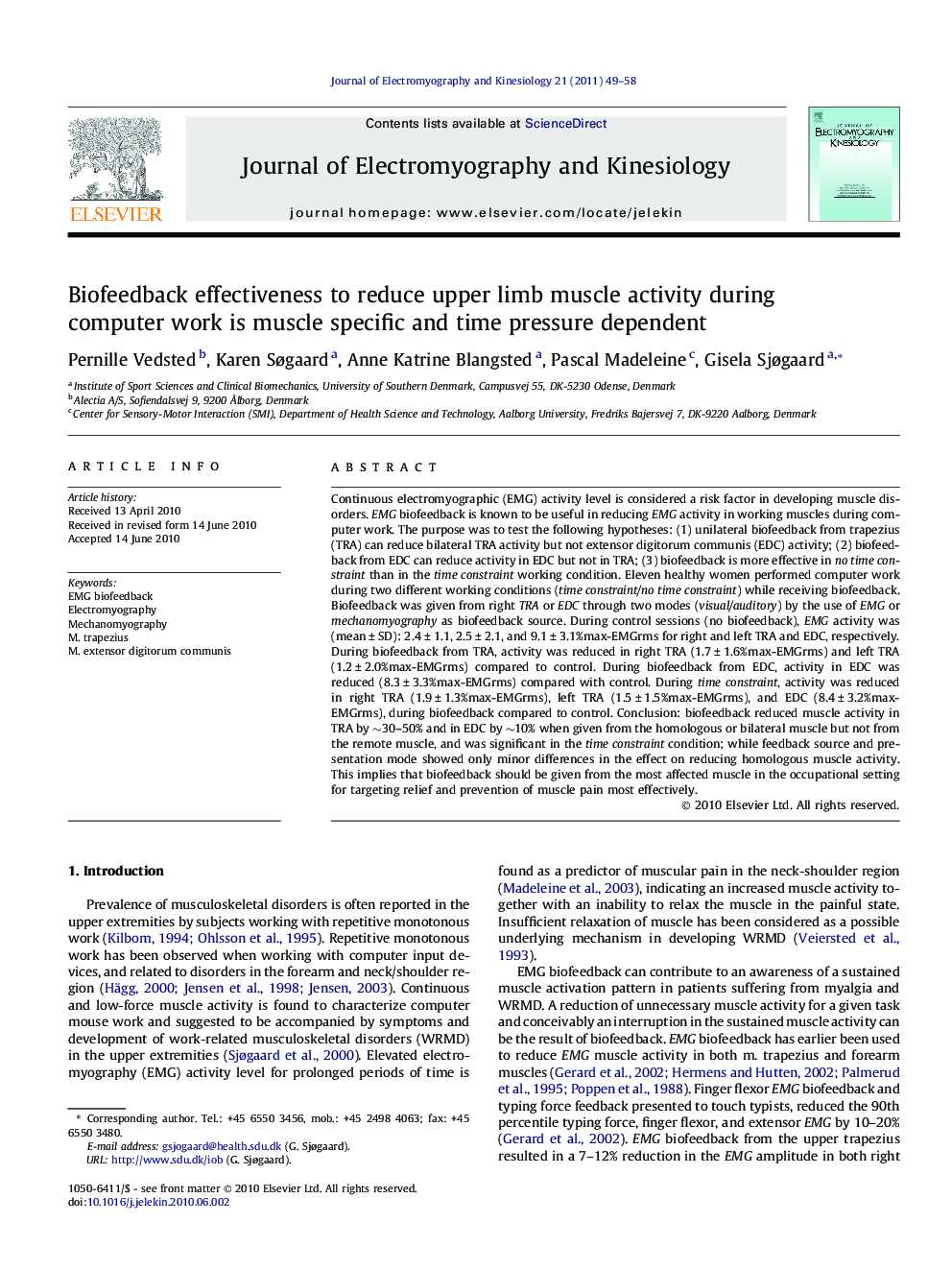| کد مقاله | کد نشریه | سال انتشار | مقاله انگلیسی | نسخه تمام متن |
|---|---|---|---|---|
| 4065095 | 1266240 | 2011 | 10 صفحه PDF | دانلود رایگان |

Continuous electromyographic (EMG) activity level is considered a risk factor in developing muscle disorders. EMG biofeedback is known to be useful in reducing EMG activity in working muscles during computer work. The purpose was to test the following hypotheses: (1) unilateral biofeedback from trapezius (TRA) can reduce bilateral TRA activity but not extensor digitorum communis (EDC) activity; (2) biofeedback from EDC can reduce activity in EDC but not in TRA; (3) biofeedback is more effective in no time constraint than in the time constraint working condition. Eleven healthy women performed computer work during two different working conditions (time constraint/no time constraint) while receiving biofeedback. Biofeedback was given from right TRA or EDC through two modes (visual/auditory) by the use of EMG or mechanomyography as biofeedback source. During control sessions (no biofeedback), EMG activity was (mean ± SD): 2.4 ± 1.1, 2.5 ± 2.1, and 9.1 ± 3.1%max-EMGrms for right and left TRA and EDC, respectively. During biofeedback from TRA, activity was reduced in right TRA (1.7 ± 1.6%max-EMGrms) and left TRA (1.2 ± 2.0%max-EMGrms) compared to control. During biofeedback from EDC, activity in EDC was reduced (8.3 ± 3.3%max-EMGrms) compared with control. During time constraint, activity was reduced in right TRA (1.9 ± 1.3%max-EMGrms), left TRA (1.5 ± 1.5%max-EMGrms), and EDC (8.4 ± 3.2%max-EMGrms), during biofeedback compared to control. Conclusion: biofeedback reduced muscle activity in TRA by ∼30–50% and in EDC by ∼10% when given from the homologous or bilateral muscle but not from the remote muscle, and was significant in the time constraint condition; while feedback source and presentation mode showed only minor differences in the effect on reducing homologous muscle activity. This implies that biofeedback should be given from the most affected muscle in the occupational setting for targeting relief and prevention of muscle pain most effectively.
Journal: Journal of Electromyography and Kinesiology - Volume 21, Issue 1, February 2011, Pages 49–58